Posted by: Ken @ 12:57 pm
View of the Chapel Trail Nature Preserve boardwalk:
During my working days, I attended meetings or connected flights through Florida several times. Never did I think of the Sunshine State as a place to call home. Having lived in New Orleans for several years, I thought of Florida as a place even more flat, hot, humid and buggy, requiring one to become a hermit in an air-conditioned cell. Four seasons always were more appealing and interesting to me. In temperate climes it is easy to escape the cold by piling on more layers of clothing, and a fan is often enough to dispel the heat. That’s why I chose the mountains of New Mexico for our retirement home, and Mary Lou agreed (somewhat reluctantly at first, as she had trouble choosing between mountains and oceans).
When our younger daughter and her husband transferred from Puerto Rico to south Florida, we visited them several times. I had to admit that the winters there were delightful, and living in a T-shirt and shorts for most of the year was also appealing. Priorities change as the years go by, and we encountered the disadvantages of life in a large home in the mountains with limited access to essential services. We pulled up stakes and moved to Florida.
During our visits to Florida I had been following the progress of the creation of a large preserve near our new home, set to open around the time of our move. The developers of adjacent subdivisions were required by law to set aside a plot of 459 acres of wetlands to mitigate damage done to the Everglades.
The City of Pembroke Pines put much money and effort into removing exotic invasive vegetation and replanting native grasses,sedges, trees and shrubs:
When vandals started a fire, damaging the newly constructed boardwalk that spanned the wetlands, we were very disappointed that the opening had to be delayed for several months. Then, in the summer of 2005, after the park had been only open for about half a year, Hurricane Wilma destroyed much of the boardwalk. It took many more months to repair the damage before the preserve reopened.
Among the more memorable sightings during past years at Chapel Trail was this visiting Merlin, in December, 2008:
The same day we saw the Merlin, I told Mary Lou that I wanted to photograph at least one Purple Swamphen before the last one in Florida is exterminated. Purple Swamphens are native to Europe, Africa, Asia, Australia, and other Pacific islands. They were believed to have first been released intentionally by private citizens near Pembroke Pines only about 15 years ago. Despite an eradication program, they have continued to multiply and now range northward up nearly half the Florida peninsula.
When we first visited Chapel Trail three years previously, swamphens were quite abundant, but I did not acquire my first digital SLR camera until 2008. I feared it was too late to see another, as they had been easy targets for the hired hands who killed over 100 a day. In 2006 alone, 3000 were gunned down by State wildlife officers. An open hunting season is planned, though I am concerned that hunters may not always distinguish between swamphens and native gallinules. See: Trash Birds
Swamphens look something like giant Purple Gallinules. They crowd out and prey upon the eggs and nestlings of native gallinules and other marsh birds:
Cedar Waxwings on an overcast day in January, 2009: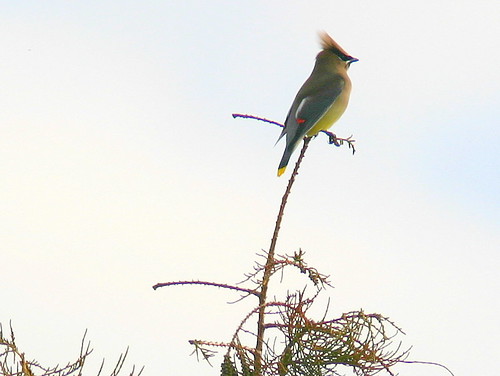
A Tricolored Heron roosts on the rail of the boardwalk in February, 2009:
Prairie Warblers spend the winter here and sometimes can be quite numerous:
In May, 2010, another Prairie Warbler provided a stunning photo-op: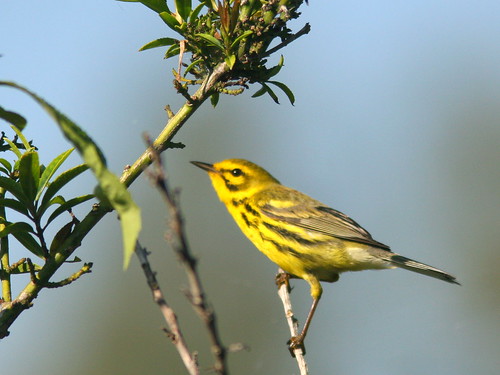
That same week, one of a pair of American Bitterns posed in the grass: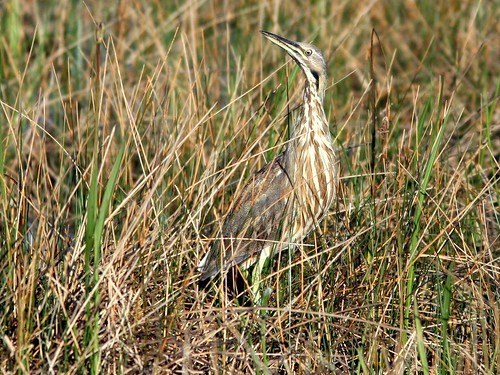
Periphyton floats to the surface in the winter. It coats submerged plants and is an important source of food for aquatic organisms. It consists of algae, cyanobacteria, and other microbes, and detritus, and its presence is a sign of a healthy Everglades ecosystem:
On a recent walk, a Northern Cardinal brightened up one very dreary day:
After a beautiful sunrise, the rains came, and we only got in a few minutes of walking the boardwalk. I had to lighten up some very dark exposures.
This Red-shouldered Hawk would not stop screaming:
This past week I captured a photo of a Red-shouldered Hawk under better lighting conditions: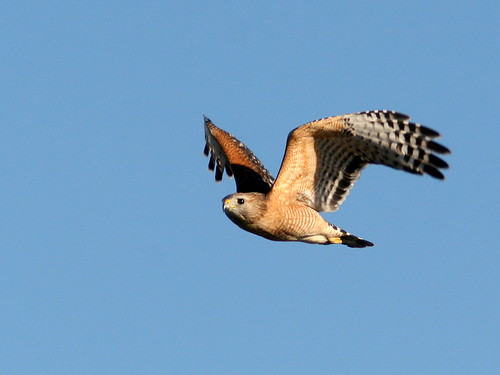
The skies opened up just after I took this photo of an Anhinga from the canoe ramp at Chapel Trail Preserve: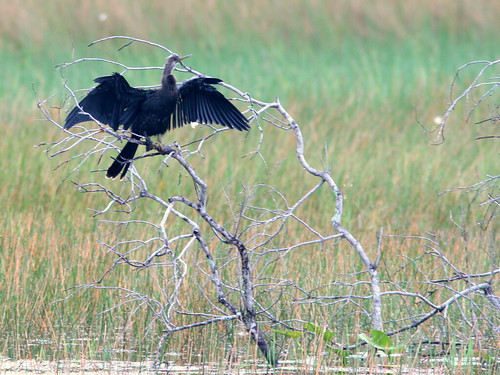
Not surprisingly, the Spiny Orb Weaver Spider, tending its web along the boardwalk, is also called the “Crab Spider:” 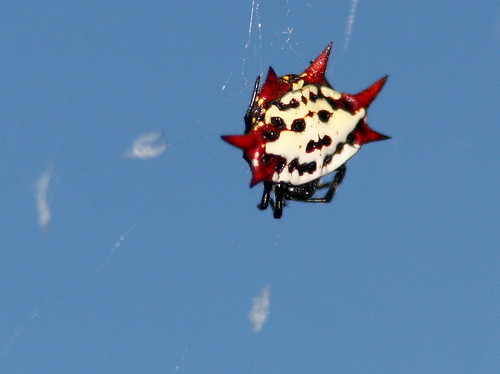
A pair of Sandhill Cranes raised one chick last year. This crane that now hangs around the parking lot may be the yearling: 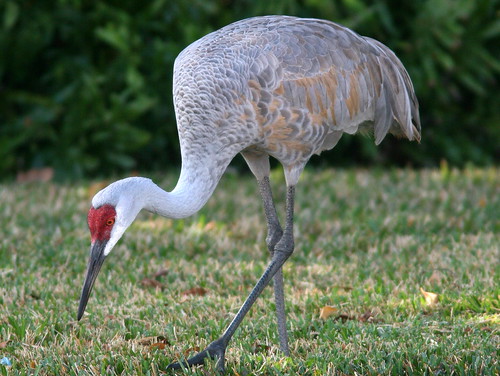
I feared for the safety of this bird! A few weeks ago, ahead of us as we exited the parking lot, the crane nonchalantly walked out the entrance and across busy Sheridan Road.
Note the straw-colored eyes of this Eastern Towhee, characteristic of the race found in Florida and southern Georgia. I have also seen the northern red-eyed variety as a migrant in South Florida: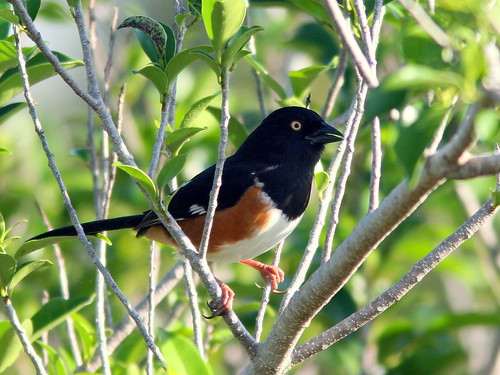
A Blue-gray Gnatcatcher in Cypress tree that is now shedding its leaves:
This Blue Jay stuffed acorns into its bill and gullet (I wonder how many):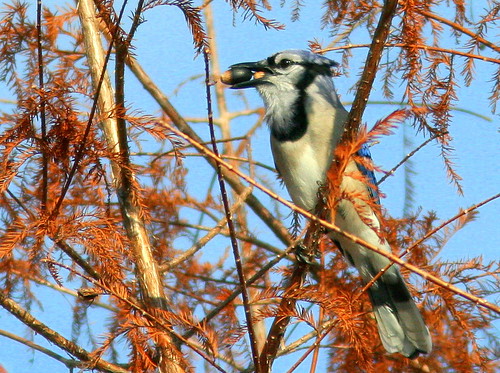
A lowly Common Grackle, “singing” near the boardwalk entrance, is beautifully iridescent: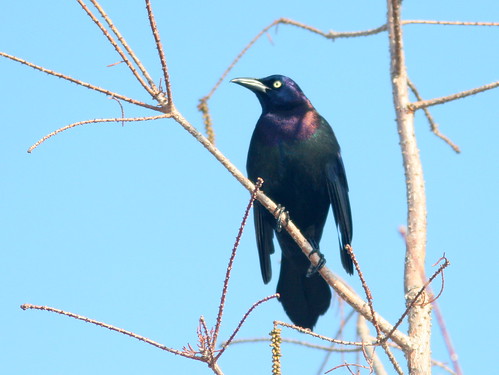
I was lucky to catch a wintering Belted Kingfisher in flight:
The male kingfisher, less colorful than his red-white-and-blue mate, settled down in a nearby tree: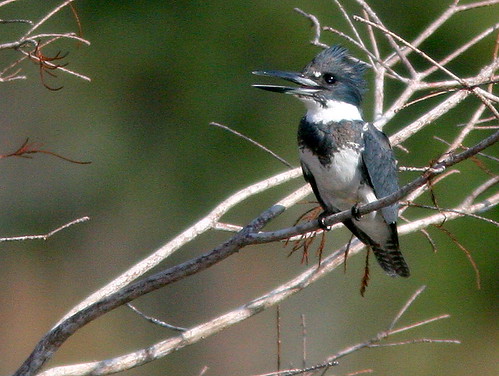
Two Northern Mockingbirds sparred on the boardwalk: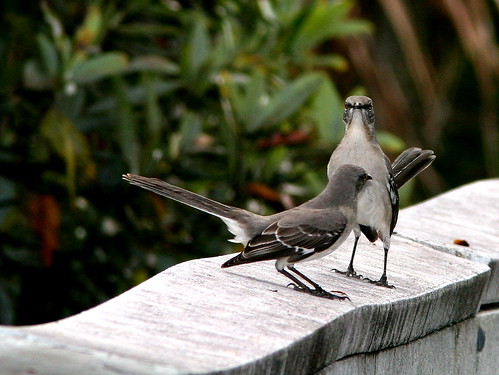
Neither would back down:
They finally came to blows:













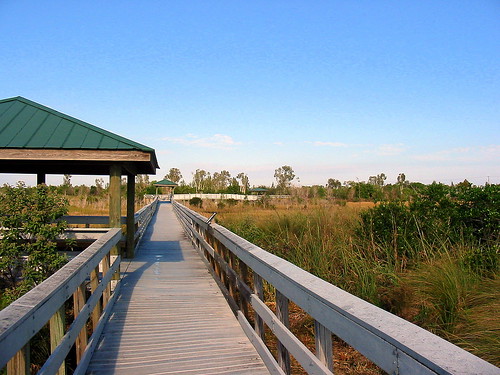
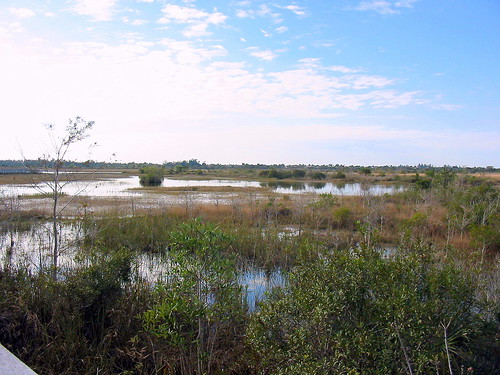
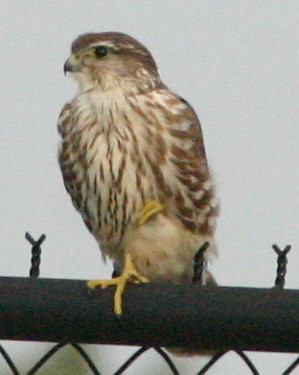
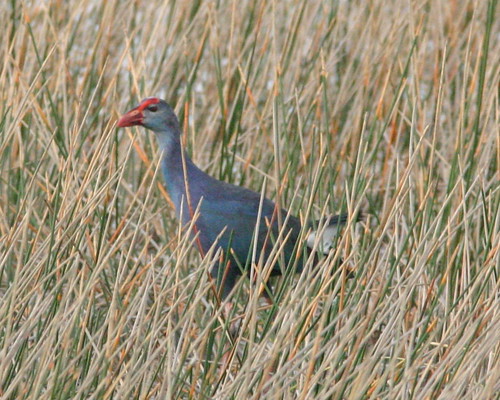
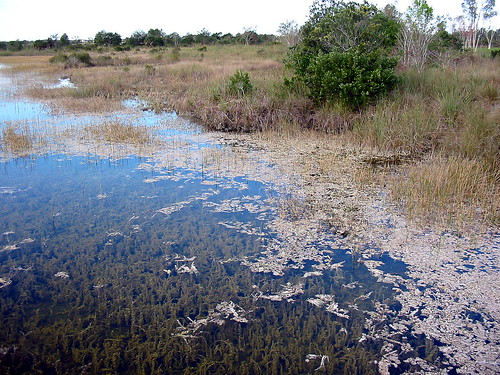
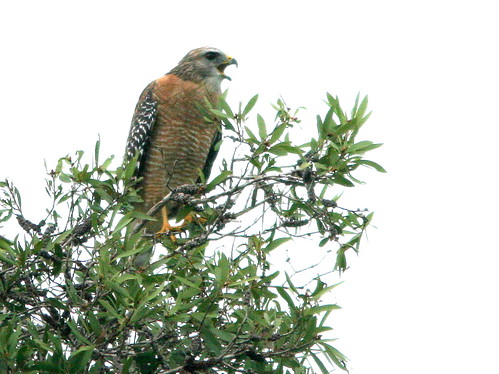
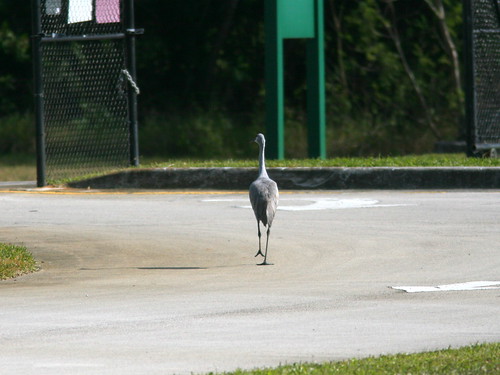


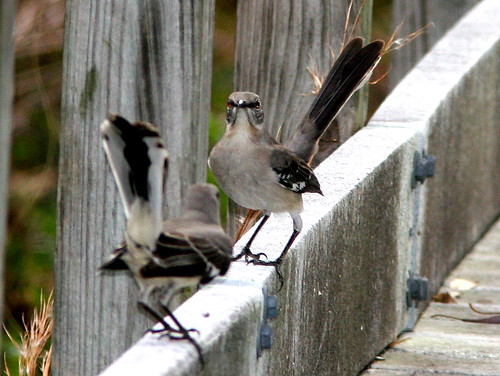
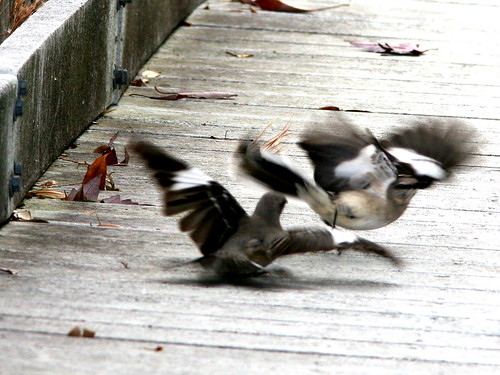
January 12th, 2011 at 10:18 am Beautiful selection of wildlife and well photographed. Boom & Gary of the Vermilon River, Canada.
January 12th, 2011 at 12:22 pm An amazing variety of birds. Birds I can only dream of seeing. Such beautiful captures.
January 12th, 2011 at 12:42 pm What a tremendous group of shots you have here. I have Kingfishers here in Michigan and now that I’m learning the DSLR it is my dream to get some pictures of them. Seeing your great shots really wetted my appetite. I sounds like you’ve experienced the best of both worlds, mountian and sea. Great blog! ;-)WBW
January 12th, 2011 at 3:08 pm A great series of photos of all the birds. Interesting comments too about introduced bird species. The same was done out here in Australia and now we have introduced species competing and even displacing native species.
January 15th, 2011 at 3:16 pm Fantastic post on this preserve. The birds are just wonderful. Beautiful photos.